- Home
- Charles Dickens
Selected Short Fiction Page 50
Selected Short Fiction Read online
Page 50
2 (p. 253) screws. Slang for miserly people.
3 (p. 253) union. A workhouse.
4 (p. 253) Consols. Contraction of consolidated annuities — interest-bearing, British government securities.
5 (p. 257) calimanco. ‘A cotton and worsted textile, highly glazed, plain or twilled’ (C. Willet Cunnington, Phillis Cunnington, and Charles Beard, A Dictionary of English Costume [London: A & C. Black, 1960], p. 246).
6 (p. 258) oro. Originally divided here at a page end with the notation ‘Carried forward... £140’ and ‘Brought forward ... £140’.
7 (p. 260) Blue Beard. See note 7 to ‘Nurse’s Stories’ (p. 422).
HIS BROWN-PAPER PARCEL
1 (p. 264) ‘domestic drama of the Stranger, you had a silent sorrow there.’ A translation of Augustus von Kotzebue’s Menschenhass und Reue. The popular version translated by Benjamin Thompson, first produced in 1798, contained a song by Richard Brinsley Sheridan which began:
I have a silent sorrow here,
A grief I’ll ne‘er impart;
It breathes no sigh, it sheds no tear,
But it consumes my heart!
2 (p. 264) ‘coining or smashing?’ Slang for counterfeiting, or passing bad money.
3 (p. 265) ‘An honest man is the noblest work of God.’ cf. Alexander Pope, An Essay on Man (1733-4), Epistle IV, p. 248, and Robert Burns, The Cotter’s Saturday Night (1786), line 166.
4 (p. 265) Hunger is a ... sharp thorn. Proverbial.
5 (p. 267) green-eyed monster. Shakespeare, Othello, III, iii, 166.
6 (p. 267) improve each shining hour. ‘Against Idleness and Mischief’, the twentieth of Isaac Watts’s Divine Songs for Children (1715) opens with the lines:
How doth the little busy bee
Improve each shining hour,
And gather honey all the day
From every opening flower!
(The second chapter of Alice’s Adventures in Wonderland, [1865] contains a parody of this by Lewis Carroll.)
7 (p. 269) Britons Strike ... Home! The title of an opera by Charles Dibdin (1803), from a song in Henry Purcell’s Bonduca (1695).
HIS WONDERFUL END
1 (p. 274) A.Y.R. An abbreviation of All the Year Round, the journal edited by Dickens in which this Christmas number originally appeared. As explained in the Introduction (p. 26) the number was intended as an elaborate spoof of the difficulties inherent in what had by 1862 become an annual Christmas production. (See the letter to Wilkie Collins, 20 September 1862, in The Letters of Charles Dickens, ed. Walter Dexter (London: Nonesuch Press, 1938), vol. 3, p. 304.) Here, as in his footnotes, Dickens is poking fun at his own editorial activities.
2 (p. 275) the last echoes of the Guy-Foxes. Fireworks on s November commemorating the detection of the Gunpowder Plot in which Guy Fawkes (1570-1606) was one of the leading conspirators.
3 (p. 277) Basilisk. A legendary reptile whose gaze was supposedly fatal. The Boy at Mugby, who adds his own inimitable errors to some of Christopher’s literary pretensions, likens Mrs Sniff’s observation of her husband to that of the ‘fabled obelisk’ (p. 378).
4 (p. 280) four-wheeler. A hackney carriage with four wheels.
5 (p. 280) Beaufort Printing House. The printer for All the Year Round was C. Whiting, Beaufort House, Strand, mentioned again at the end of the first section of Doctor Marigold’s Precriptions (p. 363).
MRS LIRRIPER’S LODGINGS
‘How Mrs Lirriper carried on the Business’ and ‘How the Parlours added a few words’ were first published as the framework of Mrs Lirriper’s Lodgings, the extra Christmas number of All the Year Round for 1863 which provides the present text.
HOW MRS LIRRIPER CARRIED ON THE BUSINESS
1 (p. 285) Airy. Area, a sunken space providing access to the basement of a building. In Bleak House, on her first visit to the Jellyby family, Esther extricates one of the Jellyby children who has caught his head in the area railings.
2 (p. 285) a man and a brother. The seal of the London Anti-Slavery Society contained the motto ‘Am I not a man and a brother?’
3 (p. 290) engine. Fire engine. According to the Oxford English Dictionary a common eighteenth-century usage which persisted into the nineteenth century.
4 (p. 290) ‘sufficient for the day is the evil thereof.’ Matthew 6: 34, ‘Sufficient unto the day...’
5 (p. 294) Sleeping ... Beauty. The fairy-tale princess who sleeps for a hundred years.
6 (p. 298) treasured His sayings in her heart. Luke 2: 19, 51.
7 (p. 302) him as sweeps the crossings. Human crossing-sweepers, like Jo in Bleak House, were a familiar sight in Victorian London (see Mayhew’s London Labour and the London Poor, voL 2 [1861; reprinted New York: Dover, 1968], pp. 465-507).
8 (p. 302) L.S.D.-ically. Slang for monetarily.
9 (p. 304) Italian iron. A cylindrical, hollow iron containing a heater, used for lace and frills.
10 (p. 304) larding-needle. A needle used to insert strips of bacon into meat and poultry in preparation for cooking.
11 (p. 308) salad days. In Shakespeare’s Anthony and Cleopatra (I, v, 73-5), Cleopatra dismisses the time of her earlier romance with Caesar as
‘My salad days,
When I was green in judgment,
cold in blood,
To say as I said then I’
MRS LIRRIPER’S LEGACY
‘Mrs Lirriper Relates how She Went On, and Went Over’ and ‘Mrs Lirriper Relates how Jemmy Topped Up’ were first published as the framework of Mrs Lirriper’s Legacy, the extra Christmas number of All Year the Round for 1864 which provides the present text.
MRS LIRRIPER RELATES HOW SHE WENT ON, AND WENT OVER
1 (p. 315) ashes to ashes and dust to dust. From the order for the burial of the dead in the Book of Common Prayer.
2 (p. 316) ‘stump up.’ Slang for pay up.
3 (p. 317) dressed almost entirely in padlocks like Baron Trenck. Baron Friedrich von der Trenck (1726-94) imprisoned from 1754 to 1763 in the fortress at Magdeburg. His Memoirs. detailing his confinement and, in particular, the heavy chains with which he was loaded, were published in 1787 and quickly translated into several languages
4 (p. 318) garden-engine. ‘A portable force-pump used for watering gardens’ (Oxford English Dictionary).
5 (p. 320) Johnson’s Dictionary. Samuel Johnson’s A Dictionary of the English Language appeared in 1755 and remained authoritative well into the following century. It was still in use as late as 1870 when Robert Gordon Latham completed A Dictionary of the English Language ... Founded on That of... Samuel Johnson, as Edited by ... H. J. Todd.
6 (p. 320) Hamlet and the other gentleman in mourning before killing one another. In the concluding scene of Shakespeare’s Hamlet.
7 (p. 321) boned. Slang for stolen.
8 (p. 326) Plymouth Sister. The Plymouth Brethren, an evangelical religious sect which makes no official distinction between clergy and laity, arose c. 1830 at Plymouth, England.
9 (p. 328) Old Moore’s Almanack with the hieroglyphic complete. Francis Moore’s Vox Stellarum first appeared in 1700 (with predictions for 1701). The idea and the name became popular, and several almanacs with a variety of prognostications emerged in the nineteenth century under the tide of ‘Old Moore’s’.
10 (p. 329) Fortunatus with his purse. In the folktale of Fortunatus (dramatized by Thomas Dekker in 1600), the beggar Fortunatus meets Fortune who gives him a choice of a variety of gifts. He chooses riches instead of wisdom and receives a magic purse from which he can always take ten pieces of gold. Equipped with this purse, he embarks on a series of adventures, at the height of which Fortune terminates his life 11· (p. 333) Your sin has found you out! Numbers 32: 23, ‘behold, ye have sinned against the Lord: and be sure your sin will find you out’.
12 (p. 336) dressed in blue like a butcher. The characteristic colour of butchers’ aprons and often other articles of their clothing in the nineteenth century.
13 (p. 337) Barricading. In
the wave of revolution which engulfed France and most of the rest of Europe in 1848, militant members of the working class threw up barricades in the streets of Paris and plunged the city into successive riots which drove Louis-Philippe from the throne, ultimately left thousands dead and wounded, and set the stage for Napoleon III and his Second Empire. The insurrection was sixteen years in the past at the time of this Christmas number, but, like many of her contemporaries who congratulated themselves on the relative stability of England during the period of turmoil, Mrs Lirriper evidently still mentally associated France with the possibility of revolution. In ‘A Flight’, the traveller known as Monied Interest dogmatically insists that ‘the French are revolutionary, — “and always at it” ’.
DOCTOR MARIGOLD’S PRESCRIPTIONS
‘To Be Taken Immediately’ and ‘To Be Taken for Life’ formed the framework for Doctor Marigold’s Prescriptions, the extra Christmas number of All the Year Round for 1865 which provides the present text. Doctor Marigold’s Prescriptions also contained a ghost story entitled ‘To Be Taken with a Grain of Salt’, omitted from this selection. There has been some uncertainty regarding the authorship of this omitted piece. However, Ruth F. Glancy has resolved the uncertainty and attributed ‘To Be Taken with a Grain of Salt’ to Dickens (see Glancy, Dickens’s Christmas Books, Chistmas Stories, and Other Short Fiction: An Annotated Bibliography [New York: Garland, 1985], pp. 437-38].
TO BE TAKEN IMMEDIATELY
1 (p. 344) Cabbage. Scraps of material stolen by tailors in the course of cutting out their work and thus slang for a tailor.
2 (p. 345) hearts of oak. From a patriotic song in Harlequin’s Invasion (1759) by David Garrick. The actual description is ‘heart of oak‘, rather than ‘hearts’.
3 (p. 346) Board of Guardians. Local administrators of the Poor Law. The New Poor Law of 1834 was a triumph of the kind of Malthusian zeal to which Dickens was unalterably opposed. In order to discourage pauperism, the workhouses were deliberately conducted with great severity and, as Oliver Twist discovered, the prescribed diet was kept as marginal as possible. At the time of Doctor Marigold’s Prescriptions, conditions in the workhouses were still notoriously grim; in Our Mutual Friend, the novel on which Dickens was working just before he wrote this Christmas number, an elderly woman named Betty Higden, impelled by her horror of parochial charity, stubbornly resists assistance and wanders over the countryside, with money for her burial sewed into her dress, until she dies.
4 (p. 349) old lady in Threadneedle-street. A familiar name for the Bank of England, situated in Threadneedle Street. In 1850, Dickens collaborated with his sub-editor H. W. Wills on an article of this tide, reprinted and discussed in Harry Stone’s edition of Charles Dickens’ Uncollected Writings from Household Words 1850-1859, vol. I (Bloomington, Ind.: Indiana University Press, 1968).
5 (p. 351) Joskin. Slang for country bumpkin.
6 (p. 3 55) the Favourite Comic of Shivery Shakey, ain’t it cold. A popular song, written by J. Beuler, entitled ‘The Man That Couldn’t Get Warm’. The first verse - quoted by James T. Lightwood in Charles Dickens and Music (London: Charles H. Kelly, 1912), p. 94 - warns:
All you who’re fond in spite of price
Of pastry, cream and jellies nice
Be cautious how you take an ice
Whenever you’re overwarm.
A merchant who from India came,
And Shiverand Shakey was his name,
A pastrycook’s did once entice
To take a cooling, luscious ice,
The weather, hot enough to kill,
Kept tempting him to eat, until
It gave his corpus such a chill
He never again felt warm.
Shiverand Shakey O, O, O,
Criminy Crikey! Isn’t it cold,
Woo, woo, woo, oo, oo,
Behold the man that couldn’t get warm.
7 (p. 359) Over the hills and far away. A traditional refrain; cf. John Gay, The Beggar’s Opera (1728), I, xiii, air xvi, as well as the nursery rhyme which begins:
Tom, he was a piper’s son,
He learnt to play when he was young,
And all the tune that he could play
Was, ‘Over the hills and far away’.
8 (p. 360) light under a bushel. Matthew 5: 15; Mark 4: 21; Luke 8:16 and 11:33.
9 (p. 363) eight-and-forty printed pages, six-and-ninety columns. A description of the format in which this and the other extra Christmas numbers of All the Year Round originally appeared. The earlier extra Christmas numbers of Household Words, beginning in 1852, consisted of thirty-six pages and sold for threepence; they were printed by Bradbury and Evans whose disagreement with Dickens, stemming from the break-up of his marriage in 1858, led to the establishment of All the Year Round published jointly by Chapman & Hall and by Dickens himself.
TO BE TAKEN FOR LIFE
1 (p. 364) ‘I says the sparrow, with my bow and arrow.’ From the nursery rhyme which begins:
Who killed Cock Robin?
I, said the Sparrow,
With my bow and arrow,
I killed Cock Robin.
2 (p. 364) history of David. I Samuel 17 describes David’s victory over the giant Goliath.
3 (p. 365) The Dairyman’s Daughter. The title of a popular tract (1809) by Legh Richmond.
MAIN LINE. THE BOY AT MUGBY
‘The Boy at Mugby’ was first published as part of Mugby Junction, the extra Christmas number of All the Year Round for 1866 which provides the present text. See note I to ‘The Signalman’ (p. 412).
1 (p. 371) Bandolining. Stiffening with bandoline, a sticky substance used to hold hair in place.
2 (p. 371) Cooke and Wheatstone electrical machinery. William Fothergill Cooke (1806-79) and Charles Wheatstone (1802-75) jointly made important contributions to the development of the electric telegraph.
3 (p. 377) Bright. John Bright (1811-89), noted orator, member of parliament, and prominent representative of the emerging manufacturing class which exerted an increasing influence on British politics after the Reform Bill of 1832.
GEORGE SILVERMAN’S EXPLANATION
First published in the January, February, and March 1868 issues of the Atlantic Monthly which provide the present text; the breaks between serial instalments are indicated here by asterisks. Dickens wrote ‘George Silverman’s Explanation’ as well as a piece entitled ‘Holiday Romance‘, omitted from this selection, for initial publication in America, where he visited, for the second time, from November 1867 to April 1868. The two works subsequently appeared in All the Year Round, and ‘George Silverman’s Explanation’ was serialized in the 1, 15, and 29 February 1868 issues of the latter journal.
1 (p. 384) the first James of England. James I suffers even more severely at Dickens’s hands in A Child’s History of England where he is repeatedly referred to as ‘his Sowship’.
2 (p. 389) you won’t wrap it up in a napkin, ... but you’ll put it out at good interest. cf. Luke 19: 20-23.
3 (p. 392) D.V. Abbreviation for ‘Deo volente’, ‘God willing’.
4 (p. 394) My kingdom is not of this world. John 18: 36.
5 (p. 394) What did the woman do wken she lost the piece of money? cf. Luke 15: 8.
6 (p. 394) faithful steward cf. Luke 12: 42-48.
7 (p. 398) more Greek and Latin than Lady Jane Grey. Lady Jane Grey (1537-54), the ill-fated queen of England for nine days after the death of Edward VI, was noted for her devotion to learning and, in particular, for her fluent command of Latin and Greek.
a
Dickens’s Christmas Books (A Christmas Carol, The Chimes, The Cricket on the Hearth, The Battle of Life, and The Haunted Man) have been edited in two volumes for the Penguin English Library by Michael Slater.
b
Dickens the Novelist (Norman, Okla.: University of Oklahoma Press, 1968), p. xiii.
c
Memories of Charles Dickens with an Account of ‘Household Words’ and ‘All the Year Round’ and of
the Contributors Thereto (London: Simpkin, Marshall, Hamilton, Kent, 1913), p. 113.
d
‘Dickens and Interior Monologue’, Philological Quarterly, vol. 38 (1959), pp. 59 — 60. Stone notes that the hallucinative opening of The Mystery of Edwin Drood is more conventionally organized and punctuated than some of Dickens’s earlier, occasional writings in Household Words and All the Year Round and contends persuasively that, even in his last and in many ways experimental novel, Dickens was deliberately refraining from complete use of stylistic devices which he had previously employed in his short fiction: ‘He decided to sacrifice technique for the sake of intelligibility, verisimilitude for the sake of easing the reader’s way’ (p. 59).
e
‘Charles Dickens’, in The Collected Essays, Journalism and Letters of George Orwell, ed. Sonia Orwell and Ian Angus (Harmondsworth: Penguin, 1970), vol. 1) p. 493.
f
Harry Stone discusses the controversy between Dickens and Howitt as well as the Christmas number which resulted from it in ‘The Unknown Dickens: With a Sampling of Uncollected Writings’, in Dickens Studies Annual, ed. Robert B. Partlow, Jr, vol. 1 (Carbondale, Ill.: Southern Illinois University Press, 1970), pp. 1-22, 275-6.
g
The connection between this tale and A Christmas Carol has been discussed by John Butt in ‘Dickens’s Christmas Books’, Pope, Dickens and Others (Edinburgh: Edinburgh University Press, 1969), pp. 134-5. Harry Stone has argued that the Carol as well as the other Christmas Books should be viewed as fairy tales; for example, see ‘Dickens’ Artistry and The Haunted Man’, The South Atlantic Quarterly, vol. 61 (1962), pp. 492-505. Michael Slater’s General Critical Introduction to his Penguin English Library edition of the Chrirtmas Books (Harmondsworth: Penguin, 1971) offers a valuable survey of their background and characteristics; Robert L. Patten’s Introduction to Pickwick Papers (Harmondsworth: Penguin, 1972), also in this series, contains an important analysis of the function of ‘The Story of the Goblins who stole a Sexton’ as well as the other tales introduced within the context of Pickwick.

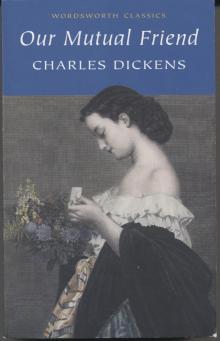 Our Mutual Friend
Our Mutual Friend_preview.jpg) The Posthumous Papers of the Pickwick Club, v. 1 (of 2)
The Posthumous Papers of the Pickwick Club, v. 1 (of 2)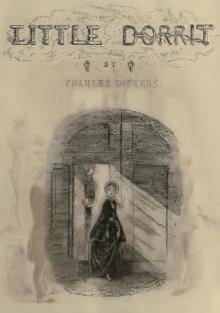 Little Dorrit
Little Dorrit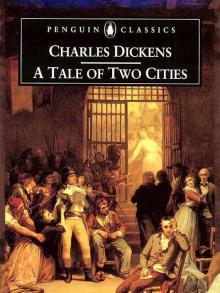 A Tale of Two Cities
A Tale of Two Cities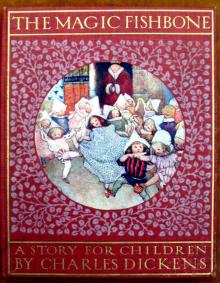 The Magic Fishbone
The Magic Fishbone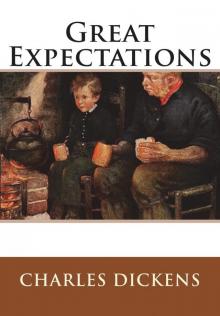 Great Expectations
Great Expectations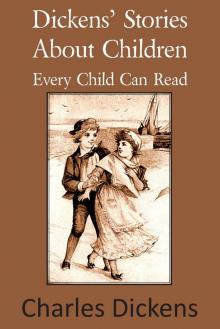 Dickens' Stories About Children Every Child Can Read
Dickens' Stories About Children Every Child Can Read A Christmas Carol
A Christmas Carol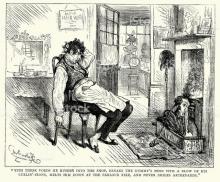 Master Humphrey's Clock
Master Humphrey's Clock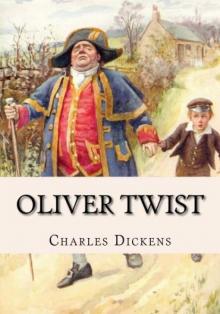 Oliver Twist
Oliver Twist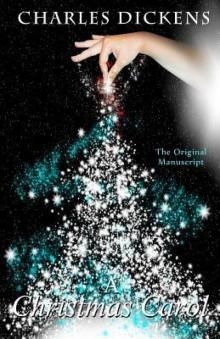 A Chrismas Carol
A Chrismas Carol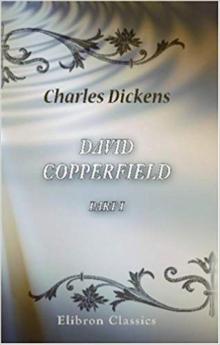 David Copperfield
David Copperfield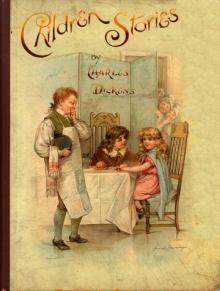 Charles Dickens' Children Stories
Charles Dickens' Children Stories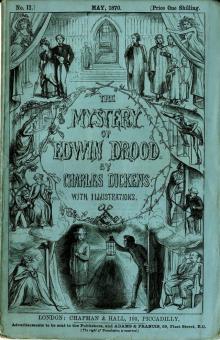 The Mystery of Edwin Drood
The Mystery of Edwin Drood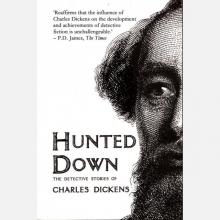 Hunted Down: The Detective Stories of Charles Dickens
Hunted Down: The Detective Stories of Charles Dickens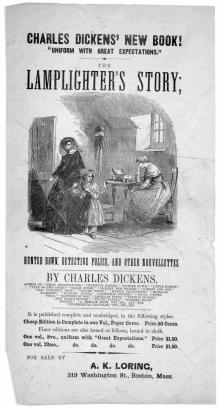 The Lamplighter
The Lamplighter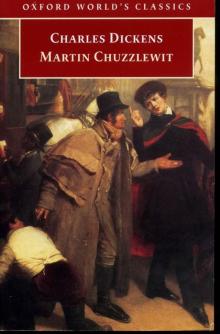 Martin Chuzzlewit
Martin Chuzzlewit_preview.jpg) The Posthumous Papers of the Pickwick Club, v. 2 (of 2)
The Posthumous Papers of the Pickwick Club, v. 2 (of 2)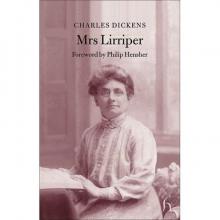 Mrs. Lirriper's Legacy
Mrs. Lirriper's Legacy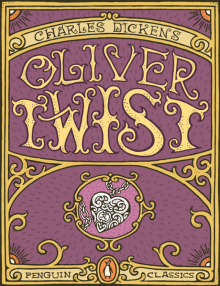 Captain Boldheart & the Latin-Grammar Master
Captain Boldheart & the Latin-Grammar Master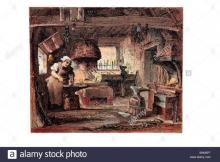 Barnaby Rudge: A Tale of the Riots of 'Eighty
Barnaby Rudge: A Tale of the Riots of 'Eighty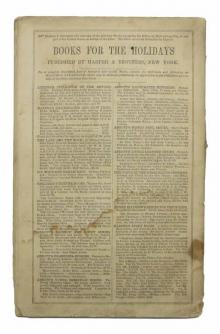 Mrs. Lirriper's Lodgings
Mrs. Lirriper's Lodgings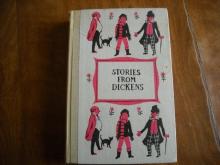 Stories from Dickens
Stories from Dickens The Mudfog Papers
The Mudfog Papers Bardell v. Pickwick
Bardell v. Pickwick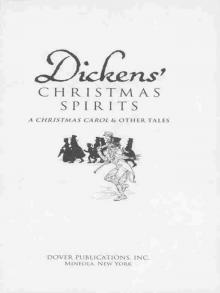 Dickens' Christmas Spirits
Dickens' Christmas Spirits A Christmas Carol, the Chimes & the Cricket on the Hearth
A Christmas Carol, the Chimes & the Cricket on the Hearth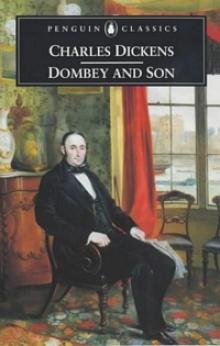 Dombey and Son
Dombey and Son Hunted down
Hunted down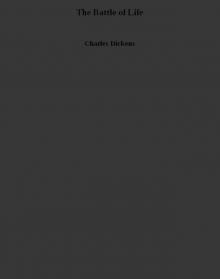 The Battle of Life
The Battle of Life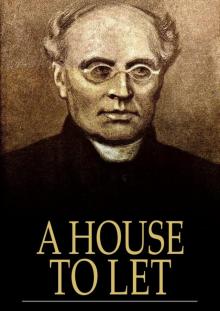 A House to Let
A House to Let Works of Charles Dickens (200+ Works) The Adventures of Oliver Twist, Great Expectations, A Christmas Carol, A Tale of Two Cities, Bleak House, David Copperfield & more (mobi)
Works of Charles Dickens (200+ Works) The Adventures of Oliver Twist, Great Expectations, A Christmas Carol, A Tale of Two Cities, Bleak House, David Copperfield & more (mobi)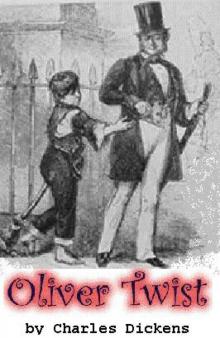 The Adventures of Oliver Twist
The Adventures of Oliver Twist The Charles Dickens Christmas MEGAPACK™
The Charles Dickens Christmas MEGAPACK™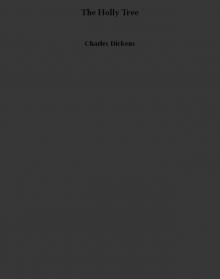 The Holly Tree
The Holly Tree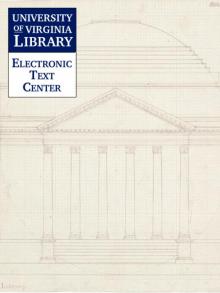 The Haunted Man and the Ghost`s Bargain
The Haunted Man and the Ghost`s Bargain Life And Adventures Of Martin Chuzzlewit
Life And Adventures Of Martin Chuzzlewit A Message From the Sea
A Message From the Sea Holiday Romance
Holiday Romance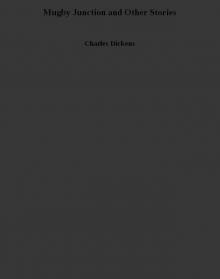 Mugby Junction and Other Stories
Mugby Junction and Other Stories Sunday Under Three Heads
Sunday Under Three Heads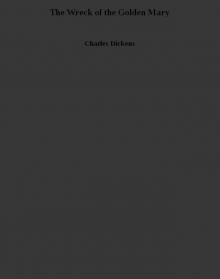 The Wreck of the Golden Mary
The Wreck of the Golden Mary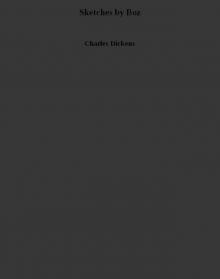 Sketches by Boz
Sketches by Boz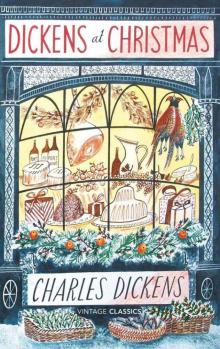 Dickens at Christmas (Vintage Classics)
Dickens at Christmas (Vintage Classics) All The Year Round
All The Year Round Short Stories
Short Stories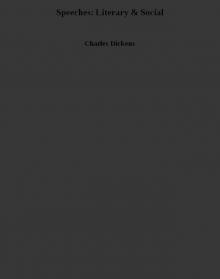 Speeches: Literary & Social
Speeches: Literary & Social The Life And Adventures Of Nicholas Nickleby
The Life And Adventures Of Nicholas Nickleby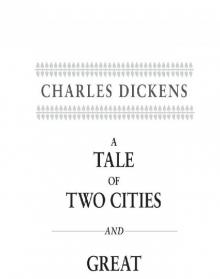 A Tale of Two Cities and Great Expectations (Oprah's Book Club)
A Tale of Two Cities and Great Expectations (Oprah's Book Club)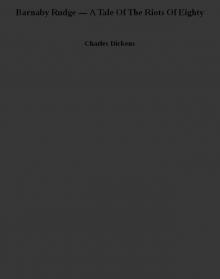 Barnaby Rudge — A Tale Of The Riots Of Eighty
Barnaby Rudge — A Tale Of The Riots Of Eighty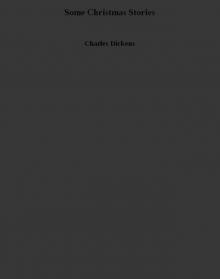 Some Christmas Stories
Some Christmas Stories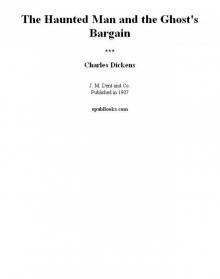 The Haunted Man and the Ghost's Bargain tc-5
The Haunted Man and the Ghost's Bargain tc-5 The Charles Dickens Christmas Megapack
The Charles Dickens Christmas Megapack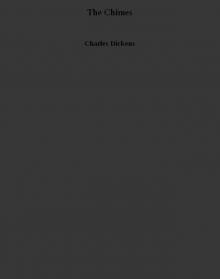 The Chimes
The Chimes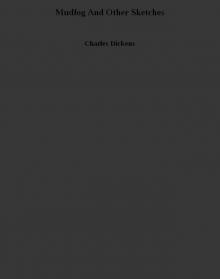 Mudfog And Other Sketches
Mudfog And Other Sketches Miscellaneous Papers
Miscellaneous Papers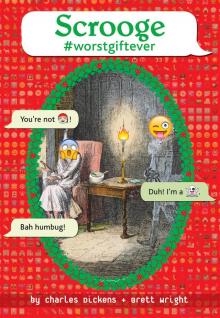 Scrooge #worstgiftever
Scrooge #worstgiftever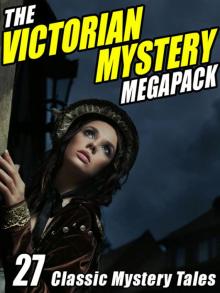 The Victorian Mystery Megapack: 27 Classic Mystery Tales
The Victorian Mystery Megapack: 27 Classic Mystery Tales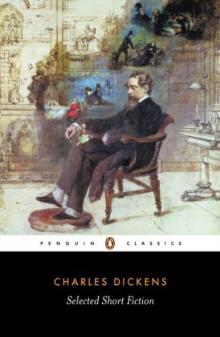 Selected Short Fiction
Selected Short Fiction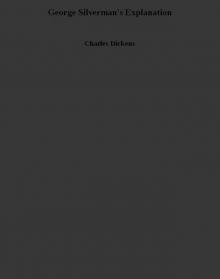 George Silverman's Explanation
George Silverman's Explanation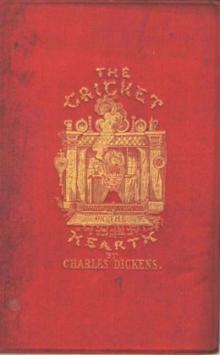 The Cricket on the Hearth c-3
The Cricket on the Hearth c-3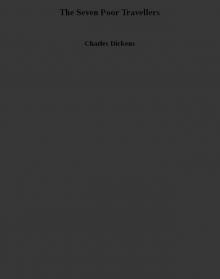 The Seven Poor Travellers
The Seven Poor Travellers Doctor Marigold
Doctor Marigold Three Ghost Stories
Three Ghost Stories